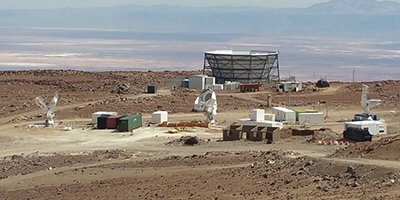ALMA
KICC researchers are leading multiple observing programmes exploiting the Atacama Large Millimeter Array (ALMA), the most sensitive facility in the world at millimeter/submillimeter wavelengths, consisting in 66 high precision antennae, located in the Chile's Atacama desert, altitude of 5,000 meters. Our observing programmes leverage also on the expertise gained by the Cavendish Astrophysics group, which contributed to the development of some of the key ALMA subsystems. KICC researchers are using ALMA to investigate the gas content, star formation and dynamics of distant galaxies.
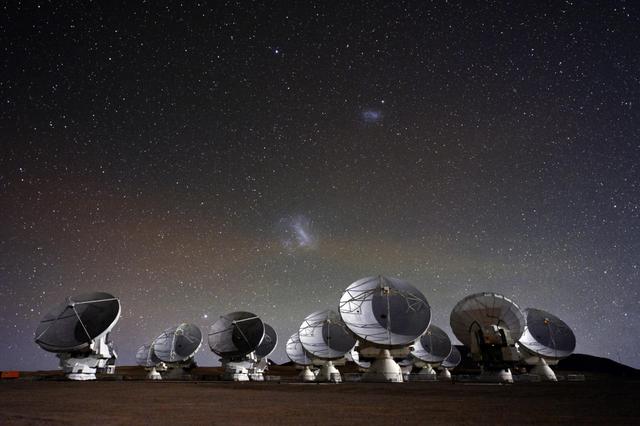
DES
The Dark Energy Survey (DES) is an international, collaborative effort to map hundreds of millions of galaxies, detect thousands of supernovae, and find patterns of cosmic structure that will reveal the nature of the mysterious dark energy that is accelerating the expansion of our Universe. DES began searching the Southern skies on August 31, 2013. KICC researchers are exploiting DES for various science goals, including the search of distant quasars.

DESI
The Dark Energy Spectroscopic Instrument (DESI) will measure the effect of dark energy on the expansion of the universe. It will obtain optical spectra for tens of millions of galaxies and quasars, constructing a 3-dimensional map spanning the nearby universe to 10 billion light years.
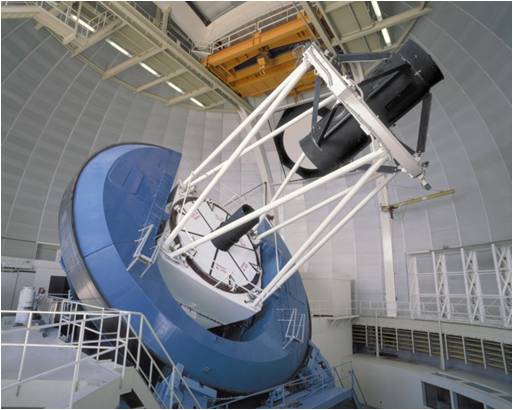
E-ELT
The European Extremely Large Telescope (E-ELT) is a revolutionary new ground-based telescope concept that will have a 39-metre main mirror and in 2025 will be the largest optical/near-infrared telescope in the world. KICC is heavily involved in the development of HIRES, its high resolution spectrograph.
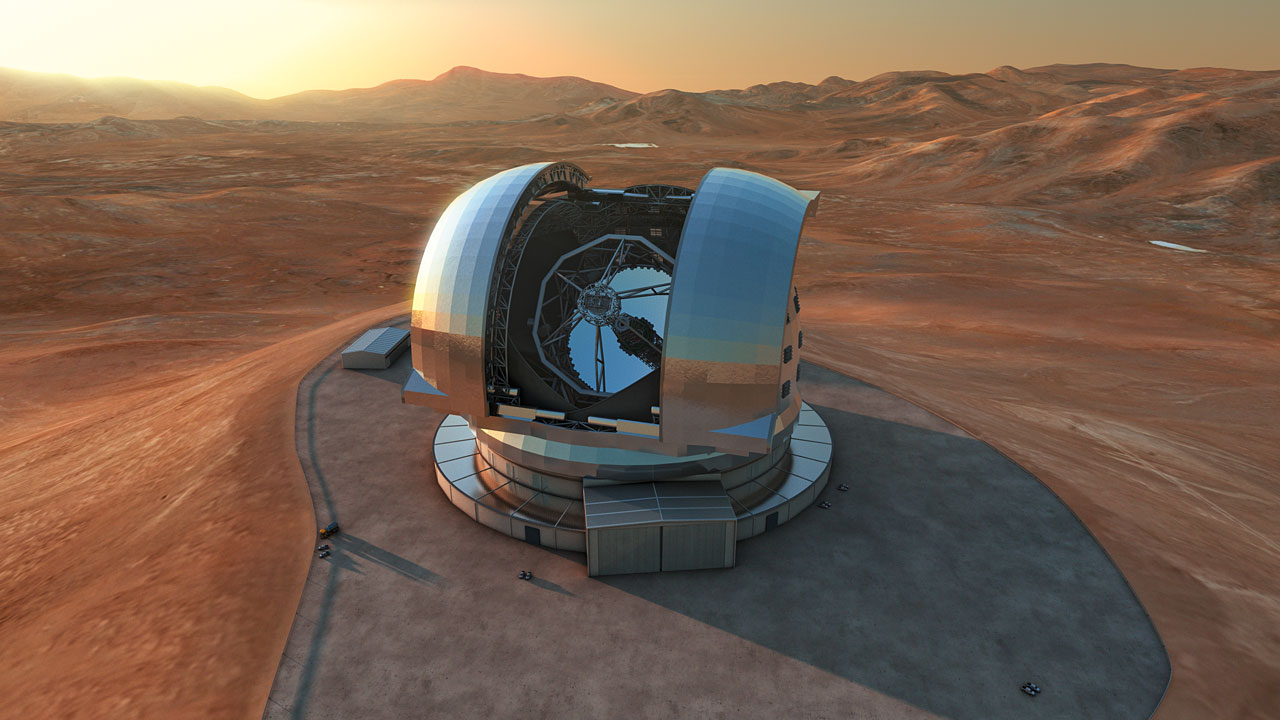
Illustris
The Illustris project is a large cosmological simulation of galaxy formation, completed in late 2013, using a state of the art numerical code and a comprehensive physical model. Building on several years of effort by members of the collaboration, the Illustris simulation represents an unprecedented combination of high resolution, total volume, and physical fidelity.
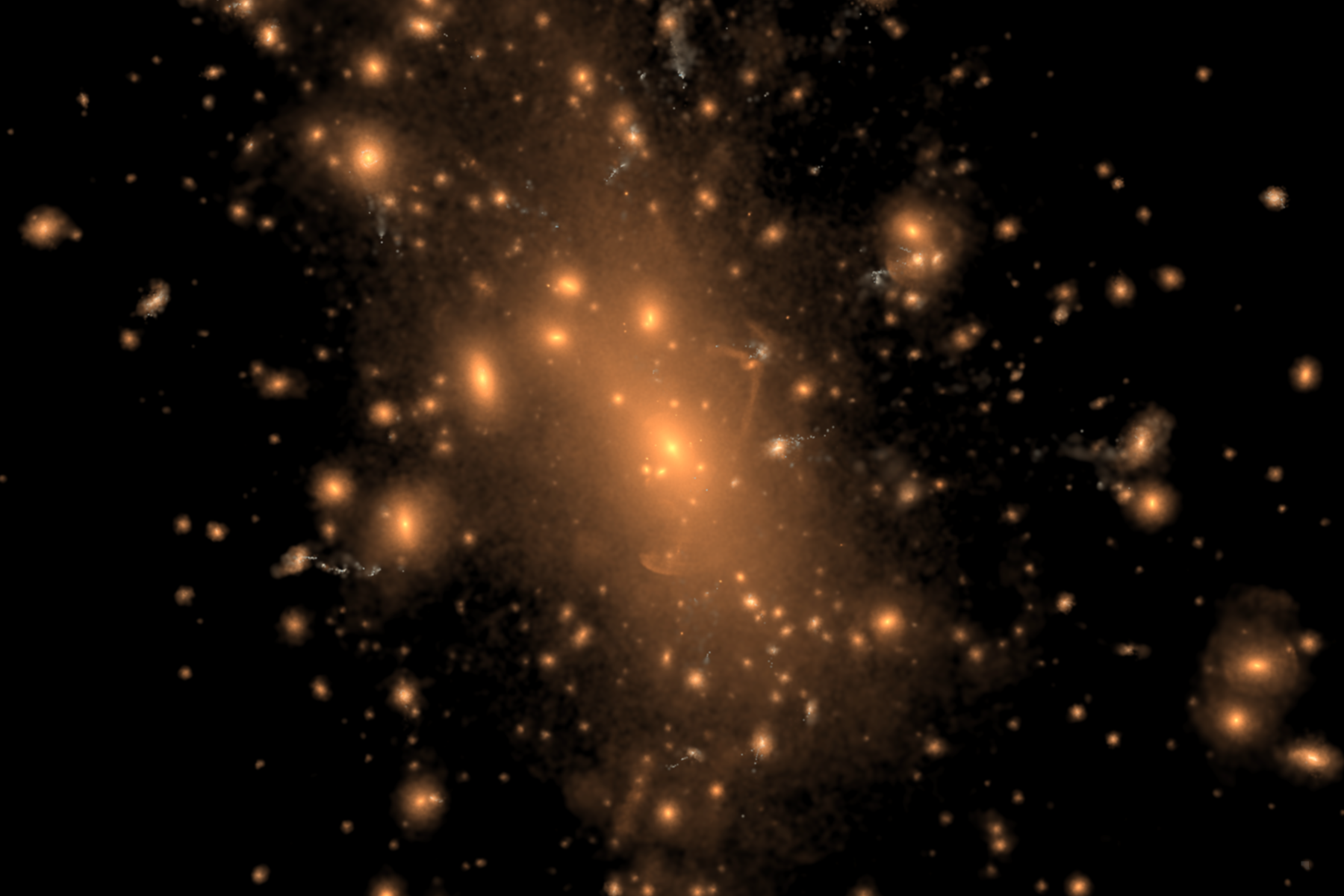
JWST
The James Webb Space Telescope, to be launched in 2018, will be the largest telescope in space. Often regarded as the successor of the Hubble Space Telescope, is dubbed "The First Light Telescope", as it is expected to detect and characterize the first generation of galaxies and accreting supermassive black hole seeds. KICC researchers are heavily involved in the primary spectrograph of JWST, NIRSpec, which will be the first multi-object spectrograph in space, orders of magnitude more sensitive than any previous facilities.

Klever
This is an ESO Large Programme exploiting the KMOS multi-IFU near-IR spectrograph (at the Very Large Telescope), to obtain multi-band observations of a sample of about 200 galaxies at high redshift. KICC is co-leading the project, whose goals are to characterize the evolution of the physical properties and chemical enrichment of galaxies across the cosmic epochs.

LSST
The goal of the Large Synoptic Survey Telescope (LSST) project is to conduct a 10-year survey of the sky that will deliver a 200 petabyte set of images and data products that will address some of the most pressing questions about the structure and evolution of the universe and the objects in it. The telescope is currently under construction and it is expected to start operations in 2022. KICC scientists are involved in the exploitation of various aspects of the survey.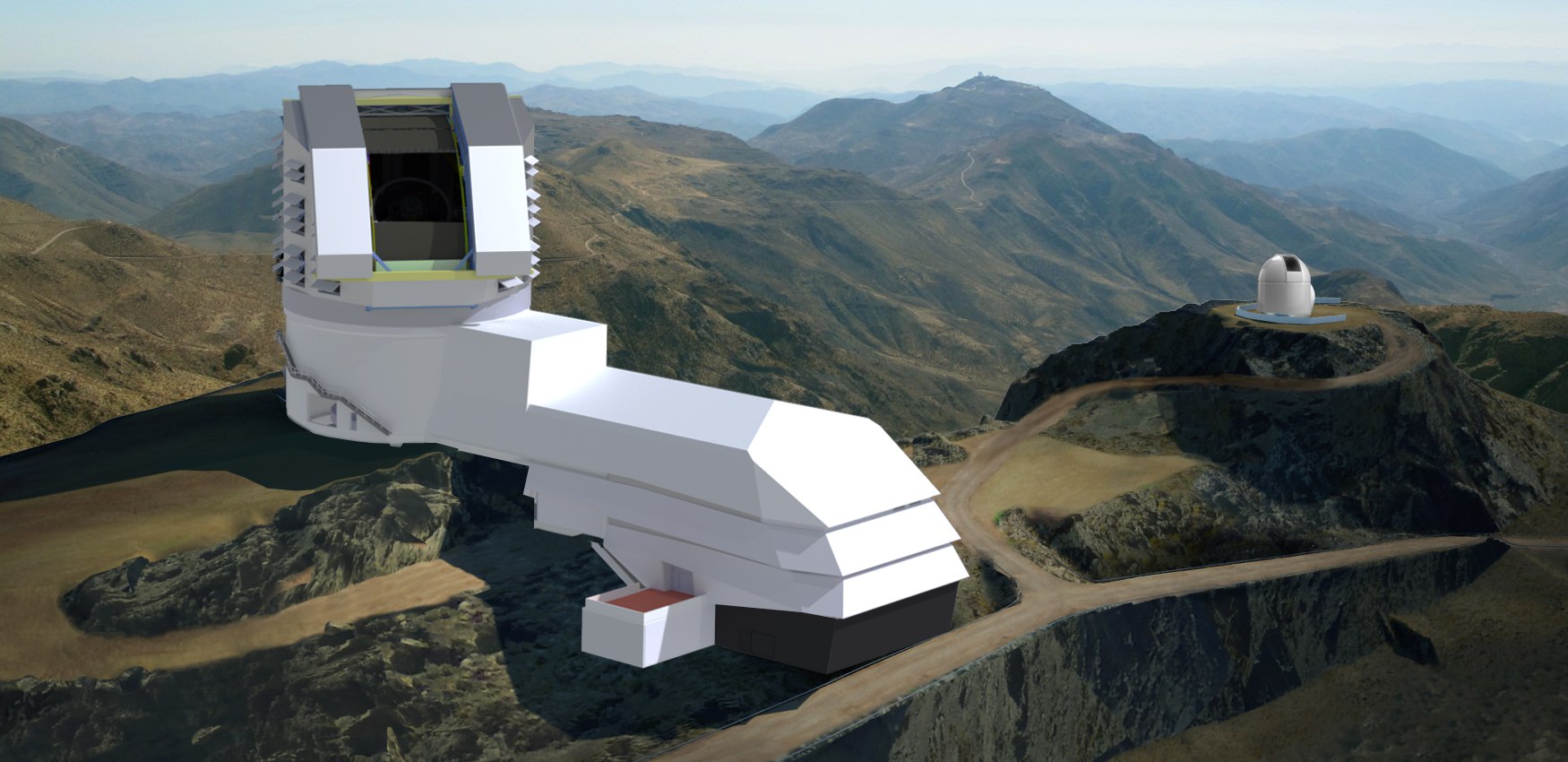
MaNGA
MaNGA is part of the 4th edition of the Sloan Digitalized Sky Survey, and it consists in a multi-IFU (Integral Field Units) survey aimed at delivering 3D spectroscopy (i.e. spatially resolved spectroscopic information) for an unprecedented sample of 10,000 local galaxies. This ongoing survey is being heavily exploited by KICC researchers to characterize the physical properties of local galaxies and to constrain their evolutionary processes.
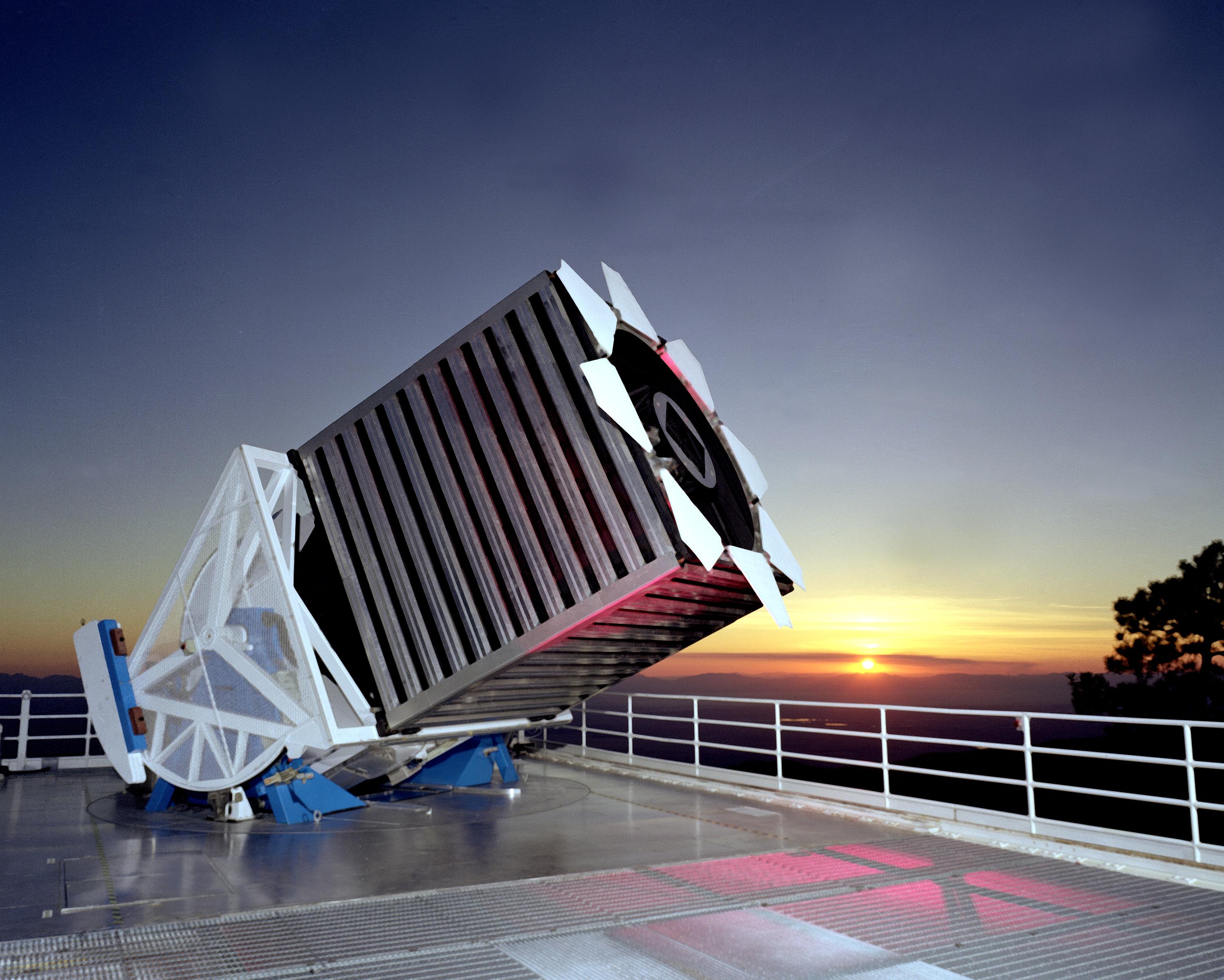
MOONS
MOONS is the next generation near-IR multi-object spectrograph for the ESO Very Large Telescope (VLT). The instrument is currently entering its construction phase. MOONS will provide spectra of over a million galaxies in a spectral range and with a sensitivity that will enable us to constrain the cosmic evolution of the key physical properties of galaxies, also as a function of environment. KICC researchers are heavily involved in MOONS, both for the development of hardware subsystems and for the definition of the scientific requirements and observing strategies.

Planck
The main goal of Planck was to measure the temperature anisotropies of the CMB to the limit set by astrophysical foregrounds, thereby extracting essentially all of the cosmological information in the primary temperature fluctuations. Further goals were to measure accurately the polarization of the CMB, to determine the properties of a large number of extragalactic sources (including galaxy clusters), and to probe the properties of dust, gas, and magnetic fields in our Galaxy. KICC has been one of the leading institutes in Planck, by hosting one of the main advanced data processing centres and by obtaining some of the primary scientific results.
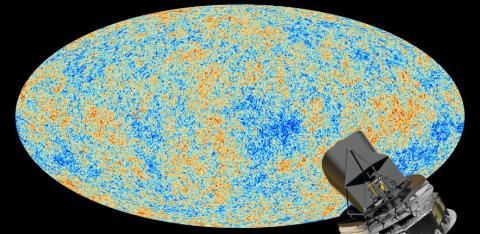
REACH
REACH is a joint experiment between the University of Cambridge and Stellenbosch University in South Africa. With primary funding from the KICC, REACH will be deployed in the semi-deserted land of the Karoo radio reserve in South Africa, a unique RFI (Radio Frequency Interference) quiet site also home of the future Square Kilometer Array telescope.
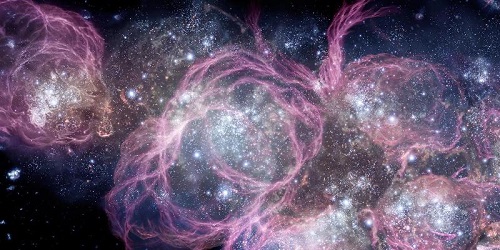
SKA
The SKA will be the next generation radio telescope. To be sited in either Australia or South Africa, it will provide nearly two orders of magnitude improvement in sensitivity over existing instruments and more than a 105-fold increase in the speed with which we can map the sky. The "first phase" is expected to start operations in early 2020's. KICC is involved in the scientific exploitation of SKA, especially thanks through its connection with the Battcock Centre for Experimental Astrophysics, in particular for the most prominent case of tracing the cosmic reionization.
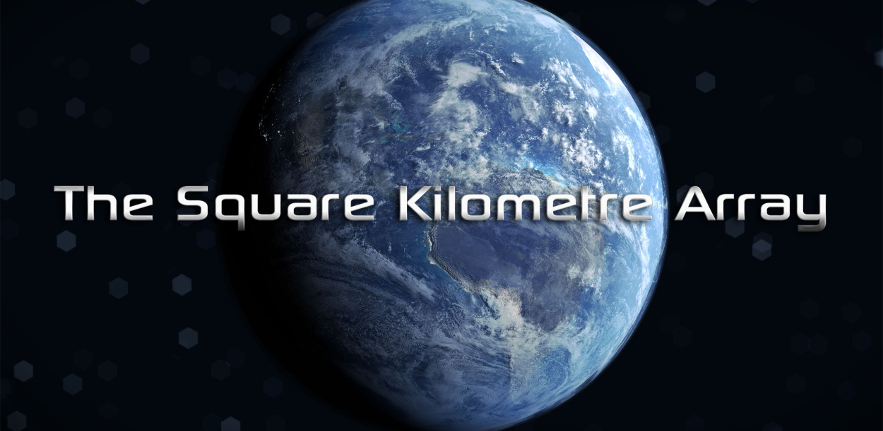
Simons Observatory
The Simons Observatory will be located in the high Atacama Desert in Northern Chile inside the Chajnantor Science Preserve. At 5,200 meters (17,000 ft) the site hosts some of the highest telescopes in the world. The Atacama Cosmology Telescope (ACT) and the Simons Array are currently making observations of the Cosmic Microwave Background (CMB). Their goals are to study how the universe began, what it is made of, and how it evolved to its current state. The Simons Observatory will add to these several new telescopes and new cameras with state of the art detector arrays. The result will set the stage for the next generation of CMB experiments.
